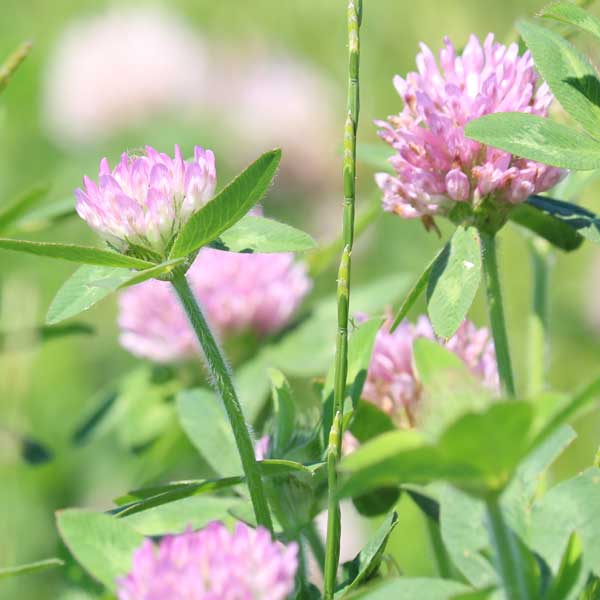JOIN US FOR OUR WINTER GRAINS & COVER CROPS VIRTUAL CONFERENCE JULY 10 9 AM - 3 PM CST
REGISTER(800) 352-5247
- Seed Finder
- About
- Resources
- Find a Dealer
- Blue River Organic
- Viking Non-GMO
- Login
JOIN US FOR OUR WINTER GRAINS & COVER CROPS VIRTUAL CONFERENCE JULY 10 9 AM - 3 PM CST
REGISTER
$33.50 – $260.00
| Species Name | Drilled | Broadcast/Aerial | In Mix | Approx. Seeds/lb | Seeding Date Range | Seeding Depth | Winter Kill | Total N (Lbs/Acre/Yr) |
|---|---|---|---|---|---|---|---|---|
| Organic Medium Red Clover | 8-12 | 15-18 | 2-5 | 272,000 | Feb-May, Aug | ¼ - ½ inch | 70-150 | |
| Organic Crimson Clover | 12-20 | 25-30 | 2-5 | 150,000 | June-Sept | ¼ - ½ inch | Yes | 55-130 |
| Organic Mammoth Red Clover | 8-12 | 15-18 | 2-5 | 272,000 | Feb-May, Aug | ¼ - ½ inch | No | 70-150 |
| Organic Yellow Blossom Sweet Clover | 8-12 | 15 | 2-5 | 259,000 | Feb-May, Aug | ¼ - ½ inch | 90-170 | |
| Organic Hairy Vetch (Northern Origin) | 25-30 | 35-40 | 10-15 | 16,000 | Aug-Oct | ½ - 1 inch | Yes | 70-200 |
| Organic Blackeyed Cowpeas | 50-75 | NA | 25-35 | 2,000 | June-Aug | ½ - 1 inch | Yes | 150 |
Extremely versatile, multipurpose clover that establishes easily and rapidly. Not as drought-tolerant, winter-hardy or long-lived as alfalfa.
Best Use: Pasture, haylage, dry hay or cover crop
Adaptation: Grows on all types of soils, but better adapted to heavier soils. Performs better than alfalfa on wet and low pH soils.
Pasture & Hay: Hay dries slowly, but improved varieties (Ruby Red, Freedom! MR) drydown faster. Can cause livestock bloat when high-percentage stands are grazed.
Planting Date: February – May, July 15 – August 30. Best clover for frost-seeding.
Seeding: 8-12 lbs/acre drilled, 15-18 lbs/acre broadcast; 2-5 lbs/acre in a mix. Drill or broadcast and roll. Plant 1/4″ to 1/2″ deep.
Cutting/Grazing: Medium red clovers recover after being cut. Don’t cut after September 1 in the seeding year to allow root reserves to build for winter survival. Graze or cut for hay when 25% – 50% of the red clover stand blooms. Leave at least 2″ growth after each harvest.
Have you used this product? Let us know what you think.